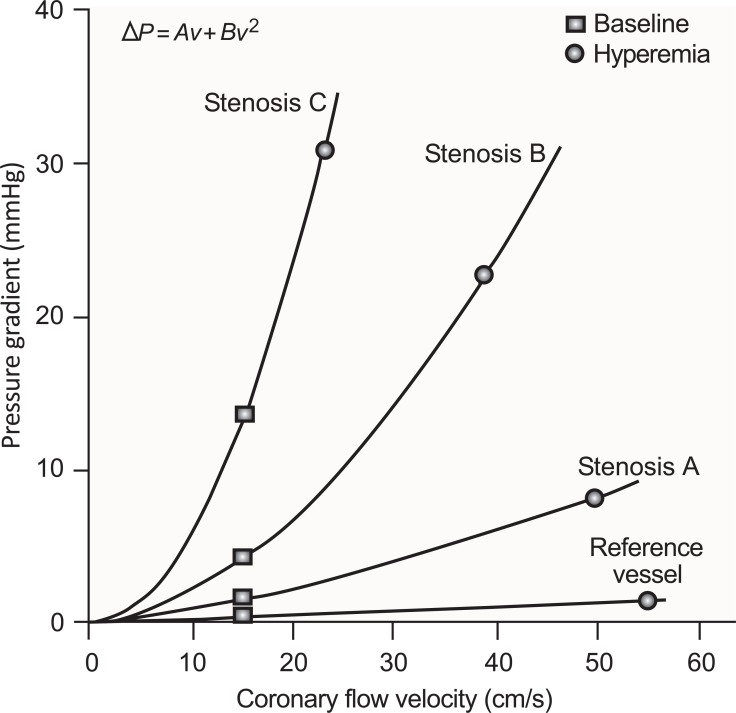Fig. (3).
The pressure drop across a coronary stenosis (Δ P) is a direct function of coronary flow velocity (v). The steepness of this relationship increases with stenosis severity (from Stenosis A to C). For a given stenosis, the pressure gradient at baseline (square) is determined by resting microvascular resistance and that at maximal hyperemia (circle) is determined primarily by the vasodilator capability of the downstream resistance vessels, although the physical factors described in the text may pose a limitation. The relationship between Δ P and v is defined by the equation at the top of the figure. The first and second terms represent pressure loss caused by viscous friction and expansion losses at the exit of the stenosis, respectively. The coefficients A and B are determined by stenosis geometry and the rheological properties of the blood [48].

